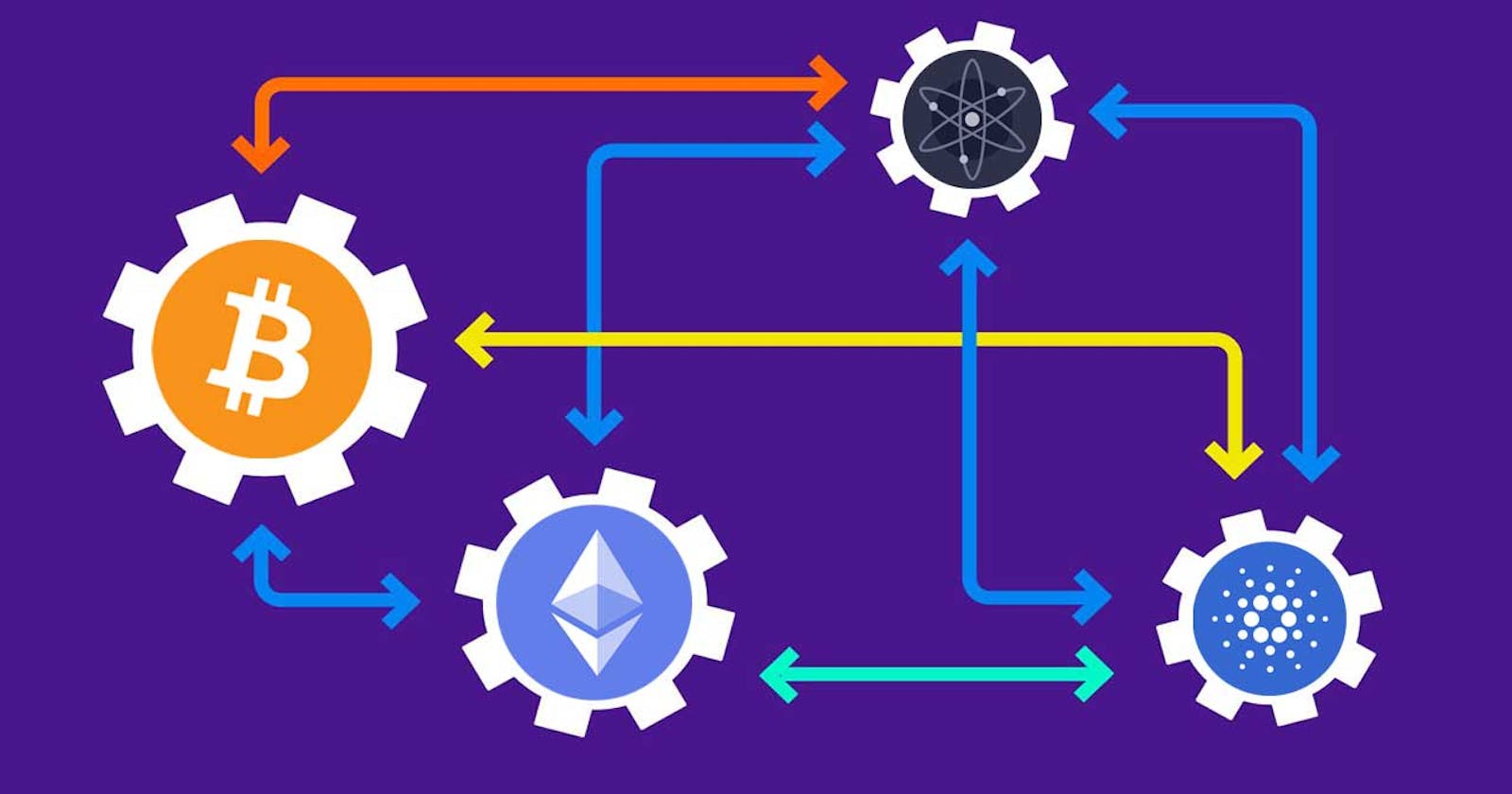BLOCKCHAIN INTEROPERABILITY
As the blockchain ecosystem grows and gains more adoption by users, we've come to see different network chains and products built upon the blockchain.
Curiosity goes around how these chains interact with each other despite them being built on different operational levels. Blockchain interoperability is simply a process by which blockchain systems can work seamlessly across platforms with other services in the chain network.

ADVANTAGES OF INTEROPERABILITY ON THE BLOCKCHAIN
Increased ease of data sharing: Blockchain interoperability increases the ease of sharing and integration of data. This encourages blockchain transactions.
Increased success rate of projects: Blockchain interoperability increases the success rate of future and current projects, especially projects like healthcare, finance, aviation, etc.
Discouraged monopolization by large networks: Cross-chain technology also helps in creating stability in the crypto market by discouraging monopolization e.g Ethereum and bitcoin are the leading networks in the crypto ecosystem and they occupy more than 70% of the total market share. This results in singular dominance, creating no space for new projects in the market that can come in to experiment with their own strategies to grow.
Enhanced privacy and security: Blockchain interoperability is a safe and secure process hence there is little to no chance of fraud due to the decentralized ownership mechanism thus requiring the call for explicit user content.
Transaction Fairness The transaction process will be equal across all networks, at this the focus will not be on the major players but also on other networks, hence, creating a favorable scenario by facilitating a balanced control of the state of the ecosystem in the crypto marketplace
Connecting two independent blockchain networks: It enables strong and effective connections between two different blockchain networks by allowing its users to transfer data/information such as assets, transactions, and virtual contracts.
WHY DOES INTEROPERABILITY MATTER?
The massive growth of blockchain technology will come down to how different blockchain networks can interact and integrate with themselves. For that reason, interoperability between blockchains is the concept by which different blockchains communicate with one another all in an effort of enabling the smooth sharing of data. It also improves chain efficiency, reducing segmentation and the free communication of users across multiple blockchains.
All that said, blockchain interoperability is ultimately about broadening access to blockchain technology and laying out a sound pathway for mainstream adoption.
RISKS OF CROSS-CHAIN BRIDGES
Cross-chain bridges have lots of benefits but also have their risks, be the fact that the technology is still evolving and there is more room for improvements over time, such risk can lead to the loss of users' digital assets. For instance, in the case of trust and centralized bridges, a custodian can decide to rug on its user and abscond with their funds. Some cross-chain bridge solutions try to prevent this by requiring custodians to provide a bond that is recouped in case of malicious behavior.
Moreso, trust-minimized blockchain bridges typically use oracles and smart contracts to manage their bridging of assets. However, this poses a challenge since flaws in the smart contract code can be exploited if bugs are found. The wormhole hack resulted in the theft of over $300 million and was caused by vulnerabilities in smart contracts. Finally, if a validator or custodian neglects to maintain cross-chain bridges, they will stop working, and user funds may be lost or simply not be retrievable.
THE FUTURE OF WEBB3

As an emerging mechanism, cross-chain technology still has more solutions that need to be implemented in order to facilitate blockchain interoperability. In other instances, it is important for blockchain to diversify by spreading its application across several industries. However, due to the prevailing challenges and constraints, it doesn't seem like an easy way to go. Blockchain must bring interoperability to its platform together with adoption in several segments that do not exist currently on the protocol. In addition, the need for interoperability through crossing technology isn't just limited to safe transactions of tokens rather it should also require the secure transfer of confidential data.
Cross-chain technologies are still in the early stages and yet evolving but they can play a vital role in accelerating blockchain interoperability. Emerging as a viable mechanism to incentivize better interoperability solutions in the future and also draw in several corporate entities and retail investors to actively participate in the blockchain to trade
Although businesses like these do not deal with products and services, the transactions also involve the sharing of confidential data and value. As a result of this, it becomes essential to put a system in place that enables more transparency and a secure system for transactions on the blockchain without involving any intermediary.
The blockchain has grown and developed, making more needs to improve for more adoption since one of the core reasons for web3 is decentralization and security, then projects will need solutions for sharing data across multiple chains in a peer-to-peer decentralized form. In a few years, interoperability will take charge. Projects will be developed and expanded upon in the same way that blockchain has since its conception over a decade ago. Web3 interoperability is an essential part of any solution as it is the next great revolution in blockchain evolution
